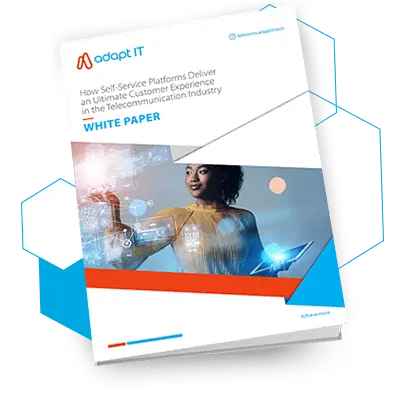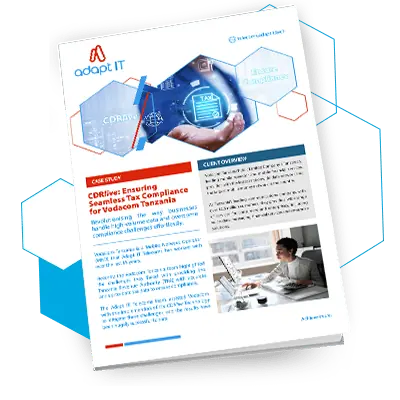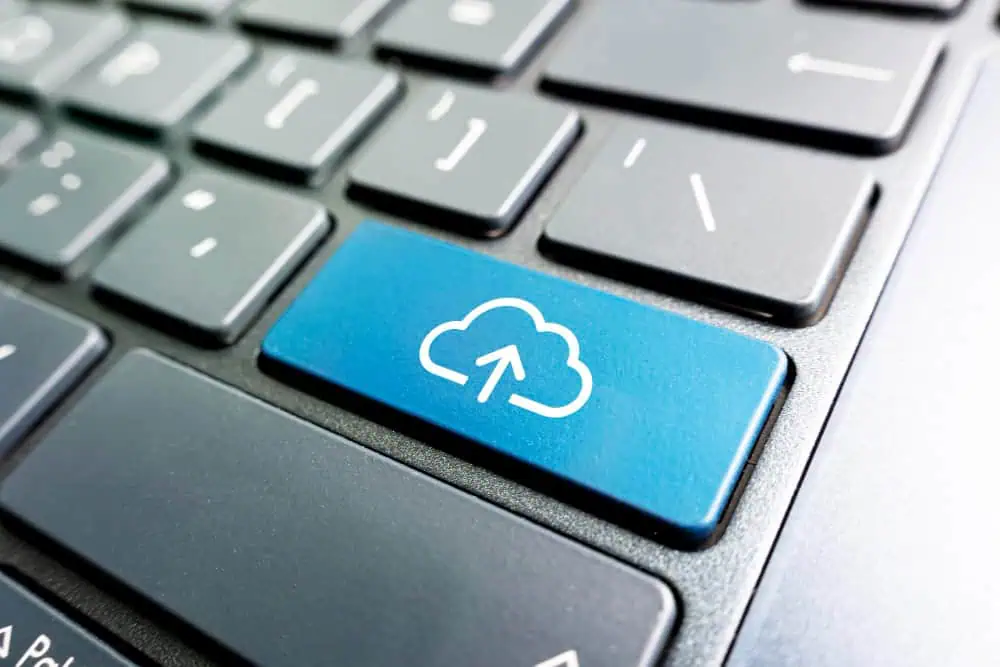USSD technology has existed for decades and is still prevalent, especially across Africa. This is mainly because of its accessibility, low cost and ease of use. USSD is also critical in bridging the digital divide and promoting socio-economic inclusion. Below, we unpack the evolution of this technology and answer the question, “Why is USSD still such an essential technology in today’s digital world?”.
Table of Contents
Toggle
Understanding USSD: A Legacy Technology
USSD, Unstructured Supplementary Service Data, is a communication protocol utilised by mobile phones and network operators to transfer text-based messages between an application server and a mobile device. These messages are a means for interactive and menu-driven services, swiftly transmitted over the signalling channel.
As a result, USSD offers a speedy and efficient method for exchanging information between a mobile device and a service provider. Below, we highlight some fundamental features and functionalities of USSD:
- Text-Based Communication – USSD messages are text based and can be used to send and receive information conversationally.
- Session-Based – A series of USSD messages can be exchanged in a session to complete a task or access a service. This allows for interactive menus and dialogues.
- Menu-Driven Services – USSD is commonly used for menu-driven services, such as checking account balances, topping up mobile credit, accessing mobile banking, and more. Users can navigate through a series of menu options by sending numeric or text-based responses.
- Real-Time Responses – USSD responses are typically delivered in real-time, making it suitable for time-sensitive transactions and interactions. Users receive immediate feedback after each input.
- No Internet Required – USSD operates over the signalling channel of a mobile network, which means it does not require an Internet connection. This makes it accessible to users even on basic mobile phones without data plans.
- Security – USSD sessions are generally considered secure because they operate within the closed network of the mobile operator.
- Cross-Network Compatibility – USSD can be used across different mobile networks and is not limited to a specific carrier, allowing for interoperability.
From the above, it is clear that USSD is a versatile technology widely used, especially in regions where smartphones and mobile data access are less prevalent. It provides a straightforward and accessible means of communication and transaction for various services. We elaborate on this in more detail below.
Exploring the Evolution of USSD
Over the years, the application of USSD has expanded and diversified. This is primarily because of its accessibility and ease of use. Due to these factors, USSD is now being used across various business applications and has become a versatile communication tool. Some of these applications and use cases include:
Mobile Banking and Financial Services
USSD is extensively used for mobile banking and financial services in many countries. Customers can check account balances, transfer funds, pay bills, and perform various financial transactions by dialling specific USSD codes on their mobile phones. This has made banking services more accessible to people without internet access or smartphones, facilitating financial and economic inclusion.
Payment and Mobile Wallets
USSD is integrated with mobile wallets and payment platforms to facilitate transactions. Users can make payments, buy goods and services, and even receive money through USSD-based systems. This has accelerated the adoption of digital payments in regions with limited access to traditional banking infrastructure. A great example is the use of M-Pesa, one of Africa’s largest mobile money services. M-Pesa is a mobile phone-based money transfer, payment, and micro-financing service launched and run by Vodafone and Kenyan Telecommunications provider Safaricom.
Customer Support and Self-Service
Many businesses are using USSD to provide customer support and self-service options. Customers can access information, request assistance, or check order status or product availability through USSD menus. This reduces the load on call centres and enhances user experience.
Marketing and Promotions
USSD is being used for marketing and promotional campaigns. Companies can engage with customers through interactive USSD sessions, conduct surveys, run contests, and offer discounts or promotions via USSD codes. This direct engagement can produce valuable customer insights.
Agriculture and Rural Services
USSD provides farmers with valuable information about weather forecasts, market prices, and farming techniques in agriculture-dependent regions. This helps farmers make informed decisions and improve crop yields.
Government Services
Governments use USSD for various citizen services such as tax filing, voter registration, and accessing government information. USSD ensures accessibility to government services even in remote areas.
Healthcare
USSD has been employed to improve healthcare services in some regions. Patients can use USSD to schedule appointments, access medical records, receive health tips, and get emergency assistance.
Transportation and Logistics
In the logistics and transportation industry, USSD is used to track shipments, manage fleets, and provide real-time customer updates about their orders or deliveries.
Education
USSD has been utilised for educational purposes, allowing students to access study materials, exam results, and course registration information.
From the above, it is clear that USSD has evolved from a simple network protocol into a powerful tool for businesses across various industries. Its accessibility, ease of use, and compatibility with even the most basic mobile phones make it a valuable means of communication and service delivery, particularly in regions with limited internet access or smartphone penetration, like those across Africa.

USSI (USSD over IP) and its Contribution
Although the functionality of USSD has remained relatively the same since its inception, there has been one significant technological advancement. This has been the development of USSI.
The main difference between USSD and USSI is their network compatibility. For example, USSD services in 2G and 3G are fast. However, to function on IMS/LTE networks, they need to switch and fall back to 2G/3G to provide these services. This often causes a delay, which often impacts customer experience. This is where USSI comes in. A USSI Gateway enables subscribers to access USSD services, such as balance enquiry service configurations, directly from the attached LTE/IMS network. It, therefore, provides a similar user experience for USSD-based services in 2G/3G networks but on the LTE and IMS networks. In this way, USSI offers more accessibility for customers on various networks.
Why has USSD and USSI technology become the cornerstone of communication in Africa?
From the above, it is clear that USSD and USSI are fulfilling a critical role in facilitating communication and access to value-added services. Below, we identify why USSD and USSI technology has become the cornerstone of communication across the African continent:
- Widespread Accessibility – USSD is available on almost all mobile phones, including basic feature phones, which are still prevalent in many parts of Africa. This ensures that a large portion of the population can access USSD-based services. USSI Gateways, on the other hand, enhance accessibility by ensuring that customers on LTE networks can seamlessly access these services. Traditional USSD is available on LTE headsets, but they must fall back onto 3G for it to work. USSI prevents this fallback and, in doing so enhances efficiency and accessibility to these services.
- No Internet Required – USSD and USSI services do not require an internet connection, making it accessible in areas with limited or no data coverage. This is particularly important in rural and remote regions of Africa.
- Cost-Effective – USSD and USSI sessions are typically charged at a lower rate than traditional voice or data services, making it an affordable option for many users, especially those with limited financial resources.
- Ease of Use – USSD and USSI menus are often simple and easy to navigate, making them user-friendly even for people with limited literacy or technical skills.
The above benefits specifically speak to how USSD and USSI technology impact the lives of those across the African market. There are, however, several benefits for Telcos within this region as well, some of these include the following:
- Revenue Generation – For Telcos, USSD and USSI services can be a source of revenue through service charges for various transactions. Additionally, customer service costs can be reduced by enabling self-service options for users to find out the information they require in real-time related to multiple service offerings.
- Customisation – Telcos can customise USSD and USSI menus and options to cater to the specific needs of their target audience, making it a versatile tool for delivering tailored services.
- Low Barrier to Entry for Service Providers – Developing USSD and USSI services typically requires less infrastructure and development investment than building mobile apps, making it an attractive option for Telcos.
Disruption and Digital Transformation
The above benefits highlight the important role that USSD and USSI are playing in bridging the digital divide across the African continent. This is especially true in the ability of this technology to connect the large population of unbanked and underserved populations to vital services that they ultimately would not have access to. The following makes this possible:
- USSD facilitates cashless transactions, allowing people to pay for goods and services without needing physical cash. This is particularly important for underserved populations who may not have access to traditional banking methods.
- USSD can connect rural or remote farmers to markets and buyers. They can check current market prices, submit orders, and receive critical information about crop management.
- USSD transactions are typically more cost-effective than traditional banking methods. This makes financial services more affordable for underserved populations.
- USSD transactions can be used for data collection purposes, helping governments and organisations gather essential information about the needs and preferences of underserved populations.
- USSD contributes to economic growth in underserved areas by providing financial services and market access, creating opportunities for entrepreneurship and income generation.
This technology can transform and disrupt regions completely by enhancing financial inclusion and providing access to essential services and economic opportunities for these communities. This ultimately contributes to their socio-economic development and promotes economic growth.
The Future of USSD and USSI in the Telecoms Industry
The future of USSD and USSI is set to continue accelerating in terms of the use of this technology across business sectors and the Telecommunications industry. This is primarily a result of the various benefits experienced because of this technology.
It must be noted that USSD use has not wavered across Africa, with around 90% of mobile transactions across sub-Saharan Africa flowing through this technology, according to a report by GMSA. The usability, low cost and ease of use have given this technology staying power.
This is evident by the number of businesses and Telcos trying to find ways to use USSD over data, which is ironic because USSD is not a data-driven technology. It is typically a technology used over the traditional SS7 network, which does not require data or the Internet.
USSD will remain a popular mechanism for communication service providers, businesses and end users in Africa because of its zero to very low transaction costs. This enables businesses to reach broader audiences at an incredibly low cost, regardless of their connectivity. This creates many opportunities and possibilities for businesses to use the USSD technology to connect with their customers and drive revenue.
Conclusion
There is no doubt that USSD technology is vital to the economic growth and financial inclusion of a large percentage of the population on the African continent. The accessibility, low cost and ease of use are just some of the reasons that make this technology a necessity, so much so that Telcos, governments and businesses across industries are utilising USSD and USSI to provide essential services and improve customer experience. This technology doesn’t seem to be slowing down, providing Telcos with several opportunities to develop new revenue streams built on this technology. We are excited to see how USSD technology will be innovated to drive profitability and extend services to those without access over the next few years.

Discover why 3.5 billion people around the world still use USSD
In this whitepaper we explore the current communication landscape, the significance of USSD and what the future holds for technology in Africa, Emerging and First World Markets.

Experienced in the Telecoms & IT industries, encompassing services and solutions from the traditional to the evolved digital communication networks, embracing profound knowledge and proficiency in both the technical and sales disciplines. Product Management, including construct, software lifecycle, roadmap strategy and market leadership of Adapt IT’s portfolio of Next Gen Value Added Services (NG-VAS) solution stream.




